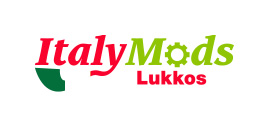Retention
Glossaries
| Term | Definition |
|---|---|
| Retention | Customer Retention is the full range of activities and strategies implemented by a company to retain its customers over time. As a metric, the Retention Rate measures the percentage of customers who remain active (e.g. continuing to purchase or renewing a subscription) within a defined period. What is it for / Why it is importantRetention is crucial because acquiring a new customer (CAC) is almost always far more expensive than retaining an existing one. A high retention rate indicates satisfied customers and leads to direct benefits such as: an increase in Customer Lifetime Value (LTV), greater revenue stability, positive word-of-mouth, and better resilience against competitors. When is it used / In what context is it usefulIt's a key concept in Relationship Marketing, CRM (Customer Relationship Management), and all business models that rely on repeat purchases (e-commerce) or subscriptions (SaaS, media services). It is the opposite objective of the Churn Rate (Attrition Rate): if the Retention Rate is 90%, the Churn Rate is 10%. Practical ExampleA streaming service starts the month with 1,000 subscribers. During the month, it acquires 200 new customers but loses 50 of the original customers. At the end of the month, it has 1,150 customers. Its monthly Retention Rate is not 95% (1150/1200), but 80% (calculated on the initial customers who remained, 800/1000). [Formula: ((Customers at end of period - New customers) / Customers at start of period) * 100]. Extra InsightAlthough often used synonymously, "Retention" and "Loyalty" have a different nuance. Loyalty is the customer's emotional attitude and behavioural preference towards the brand (the why they stay). Retention is the metric that measures the result of this loyalty (the fact that they stay). A customer can be "retained" (e.g. by a binding contract or pure convenience) without being truly "loyal". |

 IT
IT  EN
EN 































































